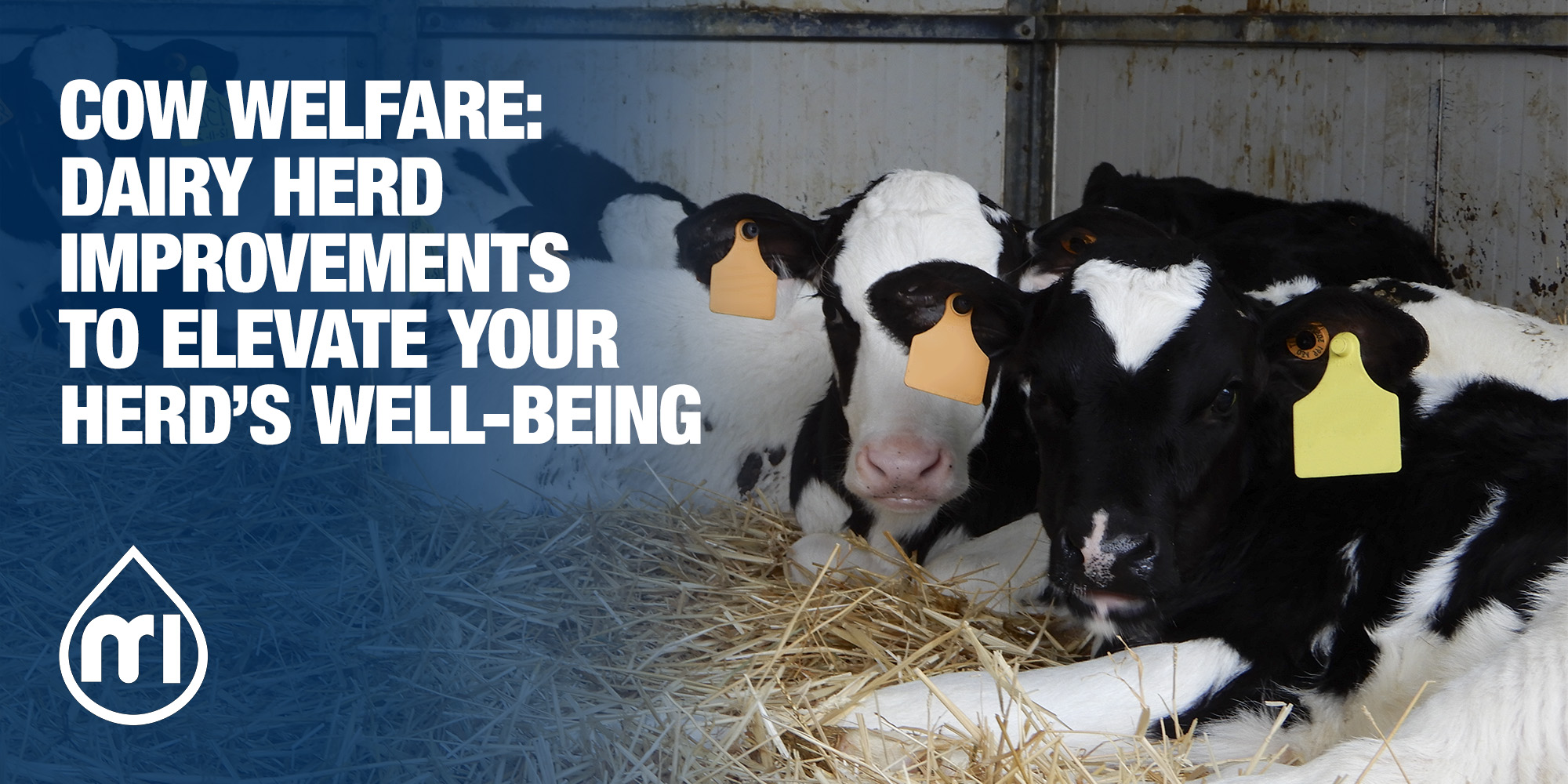
Cow Welfare: Dairy herd improvements to elevate your herd’s well-being
How can you recognize if your cow’s welfare is good or bad? And why prioritizing it is crucial for the efficiency of your farm? Let’s find out in this Blog series!
After exploring the 5 key Freedoms, introduced by the Farm Animal Welfare Council, that are crucial to have healthy and productive cows, we acknowledge some of the main indicators of bad cow welfare. In this episode, we will find out some more details to focus on to evaluate animals’ well-being and, with the help of Colin Reece, Global Farm Solutions Market Support Director, we will share our dairy herd improvements.
Be ready to take note and implement those changes, you will not regret it!
Some more red flags of bad cow welfare
The number of cows standing, waving tails, and their reaction when you try getting closer to them are not the only indicators of insufficient care for cows’ well-being, as Colin suggests.
“Hygiene is a factor that can affect cows’ welfare. When most of the animals’ backs are dirty, it means that cubicles are not clean enough, increasing the risk of bacteria spreading and contamination across the herd.
One more aspect to pay attention to is cows’ reaction when the sun hits the barn: if all animals have room to rest in the shade, it means they are correctly protected from heat. Instead, if animals struggle to find room in a limited space or pant, it means that shelters are not correctly managed, and cows are more prone to suffer from heat stress.”
Dairy herd improvements to start elevating cow welfare now!
At this point, you might be wondering what dairy herd improvements could help increase cow welfare. Here are some, according to the Five Freedoms mentioned at the beginning!
Right feed in the right amount. A wrong nutritional intake can cause pain and intestinal problems in cows, as well as represent a threat to efficiency. This is why not only should feed be proportioned to milk production, but also to the breed and the needs of the animal. To take the right decision, relying on herd reports, professional advice, and regular monitoring are three great allies. Another preliminary aspect to prioritize is constant access to clean water, free from anti-nutritional substances such as mud or manure.
Comfort is key to milk production. Since cow comfort is fundamental to enabling cows to produce milk efficiently, the animals should have sufficient space, according to their size and breed, and a risk-free environment, with reliable, safe milking equipment and without either slippery surfaces or sharp, dangerous edges.
More prevention, better health. Along with heavily increasing costs, health issues and consequent surgeries or treatments are highly stressful for cows. Therefore, tracking the herd’s performance can help prevent or identify problems at earlier stages, avoiding the need for medical operations.
No violence, no stress. Also herd managers’ attitude has an impact on animals’ well-being. For this reason, farmers should contribute to maintaining the environment as quiet and peaceful as possible. This means avoiding shouting or using violent behavior toward the animals.
Social interactions and good welfare. If all previous dairy herd improvements are implemented, the probability of seeing cows express their innate attitude arises. Though, one more step that could be taken is grouping animals according to their productivity and limiting the group changes. In fact, cows tend to create a hierarchy within the herd, which can be highly harmful to some of them. So, minimizing antagonist phenomena can be the key step to enable animals to fully express their potential.
In particular, keeping heifers in separate groups can be beneficial as they are not bullied by older, bigger cows while they are still growing, and grouping allows them to have a little more space to eat with less competition. Visual cues of good cow welfare can be recognizable through social interactions, such as playing among calves and licking among adult cows.
Adopting an approach that prioritizes cow welfare is a crucial choice as it will be beneficial for the efficiency of the farm, while ensuring that animals’ freedoms are totally respected, enabling them to fully express themselves, both in terms of social interactions and productivity.
To start operating in this direction, selecting and acknowledging inefficient practices hindering cows’ welfare is an easy but indispensable action that, combined with expert advice, will turn out to be the right choice for your herd and your farm.
